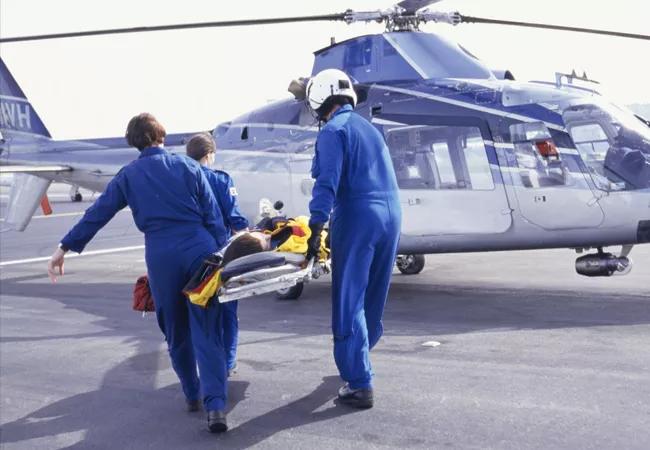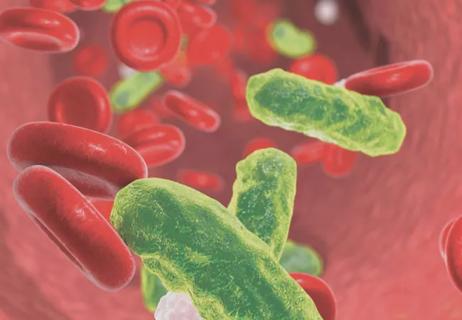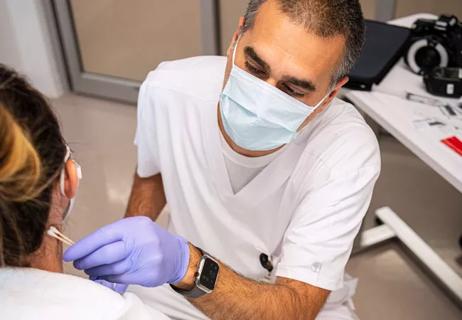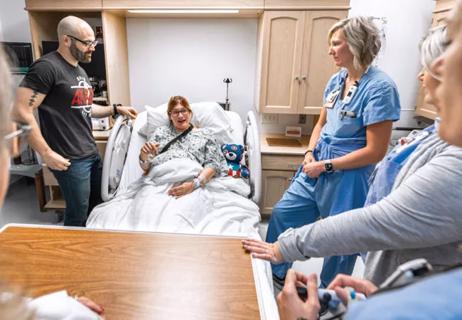Critical care transport nurses help patients get where they need to be

Cleveland Clinic Critical Care Transport (CCT), which celebrated its tenth anniversary earlier this year, has transported more than 50,000 patients. The CCT team provides 24/7 transport of critically ill and injured patients of all ages via ground mobile intensive care units (ICU), helicopter or jet aircraft from one healthcare facility to another. Approximately 30 nurses serve as vital caregivers on the CCT team.
Cleveland Clinic is a non-profit academic medical center. Advertising on our site helps support our mission. We do not endorse non-Cleveland Clinic products or services. Policy
“We pride ourselves on saying we bring Cleveland Clinic care to patients at the bedside,” says Wanda Keaton, BSN, RN, CCRN, CFRN, Nurse Manager of Critical Care Transport. “We initiate treatments at the bedside prior to leaving and continue it during transport, wherever we are taking the patient.”
The CCT team utilizes five mobile ICUs, one dedicated to the pediatric and neonate population, three serving adult patients and another reserved as a mobile stroke unit. It has two rotor wing aircraft (helicopters) and five fixed wings (planes), two of which participate in international transports. The CCT team has traveled to nearly every state and 28 countries.
Ground teams include a critical care nurse, critical care paramedic and an emergency medical technician. “Our rotor wing and fixed wings are different than other transport programs in that we always have a provider on board,” says Keaton. An acute care nurse practitioner or a physician is on every flight, along with a critical care nurse or critical care paramedic and two pilots.
Keaton has served as a critical care transport nurse for nearly 10 years. “I always wanted to do this. I started out in the cardiothoracic ICU and worked my way to critical care transport nursing,” she says. “If you ask any nurse on the team, they will tell you the same thing.”
Prior to joining the CCT team, Cleveland Clinic recommends that nurses have at least three years of experience or 4,000 hours working in critical care, including ventilator management, invasive hemodynamic monitoring and transvenous pacing. They are required to hold numerous certifications, including basic life support (BLS), advanced cardiovascular life support (ACLS), pediatric advanced life support (PALS) and Neonatal Resuscitation Program (NRP) certifications. All of the nurses also are certified as critical care registered nurses (CCRN), certified emergency nurses (CEN) or certified flight registered nurses (CFRN). In addition, the pediatric nurses have certifications specific to the pediatric/neonate population: CCRN-P or CPEN.
Professional development is ongoing for critical care transport nurses at Cleveland Clinic. “We are constantly learning,” says Keaton. “We have an education coordinator in our department who is a nurse practitioner with 20 years of field experience. She provides a wealth of knowledge.”
The CCT team divides into four groups to attend quarterly education sessions on competency, safety and quality. They also schedule various trauma training days throughout the year with emergency medical services and fire departments across the region. In addition, the CCT team holds an annual refresher training on all the devices they use in transport, such as intra-aortic balloon pumps, extracorporeal membrane oxygenation machines, left ventricular assist devices and percutaneously inserted ventricular assist devices.
All of the training ultimately benefits the patients served by the CCT team, which completed more than 6,000 transports last year. “Everyone on this team has a gazillion stories about the lives we have changed,” says Keaton. “Sometimes we don’t think too much about it, but to the patient it means the world.”
Joe Kale, RN, CEN, CFRN, a critical care transport nurse, recalls one of those stories. He was part of a team that transported a patient by helicopter from an outlying Cleveland Clinic facility to main campus. The patient was in cardiac arrest upon arrival via EMS to the regional facility. Caregivers there performed CPR and intubated the patient, who returned to spontaneous circulation. The CCT team arrived at the facility, assisted in care at bedside and treated the patient in transport to main campus.
“When our team completed a follow-up on this patient a few days later, they were on a step-down floor walking and heard the team talking. The patient’s response was, ‘I know those voices!’” says Keaton. “That is truly amazing since the patient was intubated and sedated, yet recognized the voices of our team members.”
That patient story also highlights the collaboration between EMS, referring facilities, main campus staff and the CCT team. “The things that we all do to get patients where they need to be is amazing,” says Keaton.
She believes that critical care transport nursing will continue to grow. “At Cleveland Clinic, there are so many facilities that have become specialists in certain areas and they need to utilize critical care transport to get patients there,” says Keaton. CCT is on the rise nationally, too. “With the way healthcare is going – more free-standing emergency departments and urgent care centers to alleviate overcrowding at hospital EDs – we may see even more transports.”
The dedicated CCT teams have one goal: Getting patients to the right place to receive quality care.

Nurses play pivotal role in patients’ ability to recover in the comfort of their own homes

Advocating for patient safety is imperative in fast-paced surgical settings

Advice for those pursuing a WOC nursing career

Redesigned protocols enhance infection-prevention measures

Longevity in healthcare, personal experiences may provide caregivers with false sense of confidence

Specialized team prioritizes trauma-informed care and evidence collection

Collaborative approach leans on expertise of nurses

TeamBirth aims to improve outcomes by facilitating collaboration between patients and caregivers